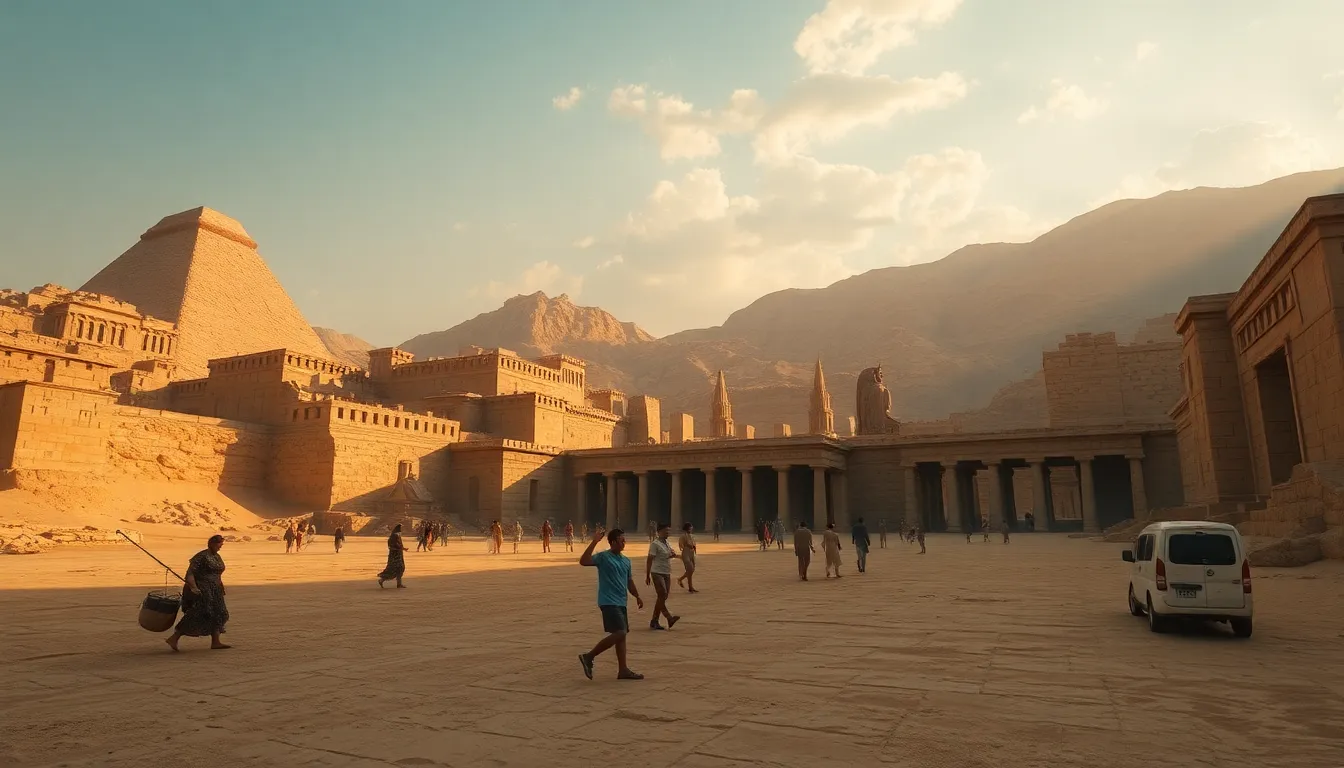The Festival of the Sacred Journey: Pilgrimage to the Gods
I. Introduction
The Festival of the Sacred Journey is a profound event in Egyptian mythology, celebrating the deep connection between mortals and the divine. This festival invites pilgrims from all corners of the land to partake in a spiritual journey that transcends the physical realm, allowing individuals to connect with the gods in a unique and personal way.
Pilgrimage holds significant meaning in various cultures around the world, often symbolizing a quest for spiritual enlightenment, healing, or fulfillment. In Egypt, this journey is not merely a physical act but a sacred rite that embodies faith, devotion, and community.
This article delves into the history, significance, and contemporary relevance of the Festival of the Sacred Journey, exploring how it has evolved over time and continues to inspire individuals today.
II. Historical Background of the Festival
The origins of the Festival of the Sacred Journey can be traced back to ancient Egypt, where the worship of deities was integral to daily life. Pilgrimages were often undertaken to honor gods such as Osiris, Isis, and Horus, who were believed to govern various aspects of life and death.
Over the centuries, pilgrimage practices evolved, influenced by changing religious beliefs and societal structures. Significant historical events, such as the unification of Upper and Lower Egypt and the construction of monumental temples, played a vital role in shaping the festival into what it is today.
- Key Historical Figures: Pharaohs and priests often led pilgrimages, reinforcing their divine connection and authority.
- Major Events: The construction of the Great Pyramids and the Temple of Karnak became focal points for pilgrims.
III. Theological Significance of Pilgrimage
The festival serves as a platform for worshiping various deities, each representing different facets of existence. Pilgrims engage in rituals to seek blessings, guidance, and protection from these celestial beings.
Among the deities worshipped during the festival, some of the most significant include:
- Osiris: God of the afterlife, resurrection, and fertility.
- Isis: Goddess of motherhood, magic, and fertility.
- Horus: God of the sky and protector of the pharaoh.
Spiritual beliefs surrounding the pilgrimage emphasize the journey as a path to enlightenment. Rituals and prayers performed by pilgrims, such as offerings and chants, create a communion with the divine, affirming their faith and devotion.
IV. Major Pilgrimage Routes
The pilgrimage routes to sacred sites are as diverse as the pilgrims themselves. These paths often lead to temples and shrines that hold significant cultural and historical importance.
Some of the most traveled paths include:
- The Route to Karnak Temple: A popular pilgrimage path that showcases ancient architectural wonders.
- The Nile River Journey: Pilgrims travel by boat, connecting with the lifeblood of Egypt.
- Desert Trails: Routes leading to various temples in the desert, often requiring physical endurance.
Cultural landmarks and natural wonders, such as the Sphinx and the Valley of the Kings, enhance the pilgrimage experience. However, accessibility can be a challenge, with some routes demanding physical stamina and resilience from the pilgrims.
V. Cultural Practices and Traditions
The Festival of the Sacred Journey is rich in unique customs and rituals that vary across regions. Traditional practices often include:
- Processions: Pilgrims gather to march towards sacred sites, chanting and singing.
- Offerings: Gifts of food, flowers, and incense are presented to the gods at temples.
- Prayer Rituals: Special prayers are recited to invoke divine blessings.
Local foods, music, and arts play a significant role in the festival, with communities coming together to celebrate their heritage. Traditional dishes are prepared, and musicians perform to entertain and uplift the spirits of pilgrims.
The role of family and community during the pilgrimage experience is invaluable. Many families undertake the journey together, reinforcing bonds and shared beliefs, while local communities offer support and hospitality to pilgrims.
VI. Contemporary Relevance of the Festival
In modern times, the Festival of the Sacred Journey continues to attract pilgrims, reflecting current trends in spirituality and personal growth. Many individuals seek out these journeys as a means of finding purpose and connection in an increasingly complex world.
The impact of modernity on traditional practices is evident, as technology and globalization influence how pilgrims engage with the festival. However, the core essence of the journey remains unchanged—an exploration of faith and a quest for divine connection.
The festival adapts to contemporary beliefs and lifestyles, incorporating modern elements while preserving its ancient roots. This blend of tradition and innovation ensures that the festival remains relevant for future generations.
VII. Personal Stories and Experiences
The stories of pilgrims who participate in the Festival of the Sacred Journey highlight the transformative effects of such spiritual journeys. Testimonials reveal the profound impact these experiences have on individuals, often leading to personal revelations and a deeper understanding of their beliefs.
Interviews with spiritual leaders and guides provide further insight into the significance of the festival, emphasizing the communal aspect of pilgrimage and the shared journey towards enlightenment.
VIII. Conclusion
Reflecting on the enduring significance of the Festival of the Sacred Journey, it becomes clear that this ancient practice continues to resonate deeply within the hearts of many. It serves as a reminder of the universal quest for connection with the divine, encouraging individuals to explore their own spiritual journeys.
As we consider our paths, let us be inspired by the stories of those who have walked the sacred routes before us. The Festival of the Sacred Journey invites us all to embark on our own quests for meaning and connection in a world filled with distractions.
In closing, remember that the journey itself is as important as the destination. Embrace your spirituality, seek out your own sacred paths, and connect with the divine in ways that resonate with your heart.




